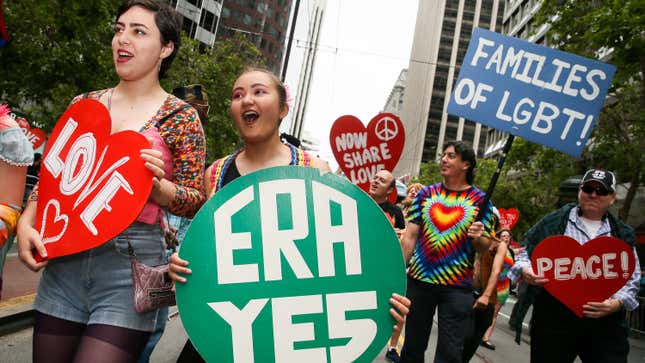There Is No Such Thing as 'Equal but Different' Gender Roles
Latest

On January 15, Virginia became the 38th state to ratify the Equal Rights Amendment, a white whale of a law which would guarantee that neither states nor the federal government could deny rights “on account of sex.” Though the deadline to ratify the amendment expired in the early ’80s, states like Virginia and Nevada are keeping the ERA in the news, and terrifying opponents who thought they’d successfully quashed the amendment 30 years ago. Three decades ago, those arguing against the ERA fretted over what the amendment would do to the “traditional” family, eroding roles that placed heterosexual men at the heads of households just as they headed corporations, workplaces, and the government.
To put what so many believed as the “natural” order of things out of whack was to invite chaos. Now, the current conversation around the ERA still remains steeped in paranoia around what happens if the framework for unequal gender roles is taken away.
About a month before her death in 2016, longtime enemy of the Equal Rights Amendment Phillis Schlafly perfectly summarized the anti-feminist issue with equality—treating all humans as equal under the law erodes a hierarchy humans have been cultivating for centuries:
“Anyone with a child knows that children learn about the world through binary options: up or down, hot or cold, big or little, inside or outside, wet or dry, good or bad, boy or girl, man or woman,” Schlafly said. “But the radical feminists, who staff women’s studies departments at most colleges, have propagated the idea that we have to get rid of the ‘gender binary’ along with the expectation of distinct roles for men and women.”
-

-

-

-

-

-

-

-

-

-

-

-

-

-

-

-

-

-

-

-

-

-

-

-

-

-

-

-

-

-

-

-

-

-

-

-

-

-

-

-








































